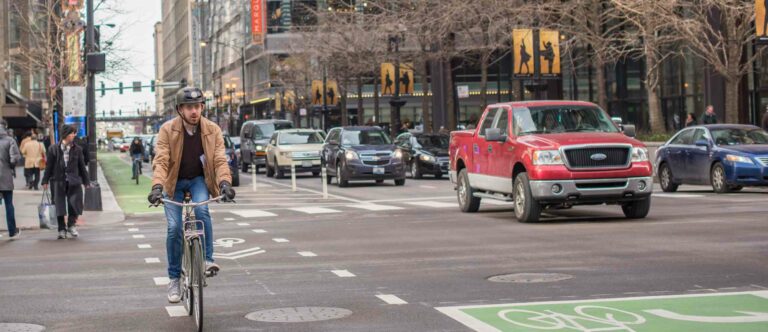Physical Changes to Anticipate Following a Road Traffic Collision
Accidents on the road can usher in a torrent of unforeseen physical changes, from the abrupt force that jolts the body to the ongoing battle with pain that may ensue.
Individuals who endure vehicular accidents often find themselves grappling with injuries and symptoms that can range from fleeting to enduring. Be short-term or long-term.
Immediate physical reactions might be swift and alarming, while short-term and prolonged ailments affect mobility and mental well-being.
As we delve into the common trajectories of physical recovery from road traffic collisions, it becomes apparent that the journey is as individualized as the people involved.
Keep reading to understand the physical transformations that can unfold in the wake of a vehicle accident.
Key Takeaways
- Vehicle Accidents Can Cause a Range of Injuries That May Not Be Immediately Apparent Due to Adrenaline and Shock
- Recovery From Automobile Collisions Often Requires a Multi-Tiered Approach That Includes Medical Intervention and Physical Therapy
- Managing Swelling and Pain Is Crucial as They Can Limit Mobility and Hinder the Recovery Process
- Legal Representation Can Be Essential in Dealing With Chronic Conditions Resulting From Car Accidents Like Whiplash or Persistent Back Pain
- Addressing Both the Physical and Emotional Impacts of a Vehicle Collision Is Key to Comprehensive Recovery
Immediate Physical Reactions Post-Collision
In the chaotic aftermath of a road traffic collision, the body undergoes a range of physical reactions that can manifest within moments of impact.
These responses, driven by the sudden rush of adrenaline and the body’s instinctual move to enter a state of shock, are crucial for both the immediate assessment of potential injuries and for informing subsequent medical consultations.
Individuals involved may experience an array of sensations, from a numbing lack of pain owing to the body’s natural endorphins to specific discomforts concentrated where trauma was sustained.
Visible injuries such as lacerations, hematomas, and contusions often present as immediate evidence of the event’s force, signaling the need for emergency care and thorough evaluation.
Experiencing Shock and Adrenaline
Upon impact during a vehicle collision, individuals often encounter a flood of adrenaline, the body’s fight-or-flight hormone. This rush functions to temporarily enhance strength and stamina, which may be necessary for immediate reaction or escape from danger.
The state of shock that can follow is equally significant; it serves to dull the sensation of pain and can obscure the extent of sustained injuries. Professionals warn that this numbing effect could prevent victims from recognizing their need for urgent medical attention.
| Adrenaline Response | Shock |
|---|---|
| Increased strength and stamina | Pain sensations dulled |
| Heightened alertness | Potential injury obscuration |
| Necessary for immediate action | Medical evaluation importance |
Initial Pain Responses and Their Locations
Following a vehicle accident, individuals often report an onset of discomfort in various regions of the body. The immediate jolt can cause neck pain indicative of whiplash injury, or a sharp, shooting pain from a possible vertebral misalignment or disc damage.
- Neck stiffness associated with a whiplash injury
- Shooting pains in the back signaling potential vertebral damage
- Knee injury due to bracing impact during collision
Apart from skeletal and muscular consequences, sufferers may discern shoulder pain or lower back pain, which warrants careful scrutiny to assess for soft tissue injuries or more severe conditions such as a herniated disc.
Visible Cuts, Bruises, and Abrasions
Visible injuries such as cuts, bruises, and abrasions are often the most immediate and recognizable outcomes of an automobile collision. These injuries, though sometimes superficial, can serve as indicators of more serious underlying damage, such as soft tissue trauma or bone fractures.
It is imperative for crash victims to undergo a thorough medical evaluation when such injuries are present: failure to properly address cuts could result in infection, and unattended bruises may hint at deeper organ damage or internal bleeding.
| Type of Visible Injury | Possible Underlying Issue |
|---|---|
| Cuts | This may signify deeper soft tissue damage or internal bleeding |
| Bruises | May signify deeper soft tissue damage or internal bleeding |
| Abrasions | Surface damage that could co-occur with more severe injuries |
Short-Term Effects on Mobility and Function
The convalescence period after an automobile collision can introduce several impediments to an individual’s physical capabilities.
As they navigate through the initial stages of recovery, patients may grapple with an abrupt limitation in their range of motion, noting that the former ease of movement has been replaced by stiffness and hindrances.
The resultant complications are not just confined to the ability to move but can also extend to everyday functions—turning a mundane task into a challenge.
Furthermore, swelling in the areas impacted by trauma emerges as another concern, marking the body’s immediate response to injury and potentially affecting overall mobility.
This phase defines the commencement of the healing process, where acknowledgment and management of these symptoms are pivotal in fostering an efficient recovery journey.
Range of Motion Restrictions
In the wake of a vehicle collision, individuals often face profound mobility issues. The impact can inflict damage that tightens muscles and joints, leading to a restricted range of motion that compromises daily activities.
Recovery from such constraints typically necessitates a multi-tiered approach: promptly and systematically addressing these limitations is essential for regaining full physical functionality. Medical intervention, along with physical therapy, often plays a crucial role in restoring movement.
- Identification of restricted movement post-accident
- Assessment by healthcare providers to determine injury severity
- Implementation of a targeted treatment plan to improve range of motion
Difficulty With Daily Activities
The repercussions of a vehicle collision often ripple into the realm of simple daily routines, transforming them into strenuous endeavors. Tasks that previously went unnoticed, such as dressing, cooking, or even writing, may now require monumental effort or become completely unmanageable without assistance.
For those healing from an automobile collision, Engagement in Occupational Therapy may be imperative to restore their ability to perform essential daily activities. This therapeutic intervention aims to empower individuals with adaptive techniques and tools for navigating their usual tasks, underscoring a crucial aspect of the recuperative process.
Swelling in Affected Areas
In the immediate aftermath of a vehicle accident, swelling often becomes a palpable and sometimes disconcerting sign of the body’s attempt at self-repair. This inflammatory response aims to protect the affected regions, mobilizing increased blood flow and immune resources to the sites of injury.
As part of the recovery process, managing swelling is paramount because it can not only cause discomfort but can also limit mobility and delay healing. Healthcare providers may suggest interventions such as cold compresses, elevation, or medication to help reduce swelling and facilitate the body’s natural repair mechanisms.
Common Musculoskeletal Injuries From Collisions
Victims of road traffic collisions often emerge with an array of musculoskeletal injuries that can profoundly impact their overall health and mobility.
These injuries, which result from the forceful blows and stress exerted upon the body during a crash, commonly comprise soft tissue damage, bone fractures, and joint-related traumas such as sprains and strains.
Each type of injury presents its own set of challenges and recovery trajectories.
Understanding the implications of these common injuries is essential for car accident victims as they embark on the path to rehabilitation and seek professional therapeutic interventions to regain their physical capabilities.
Soft Tissue Damage and Its Implications
Soft tissue injuries, a common consequence of motor vehicle collisions, involve trauma to the muscles, ligaments, and tendons. These injuries may not be immediately apparent post-accident due to adrenaline and shock, yet they frequently emerge as the source of persistent discomfort and functional impairment in car accident victims.
The nature of soft tissue damage poses diagnostic challenges, often necessitating thorough medical imaging and clinical evaluation to inform an effective treatment plan. For individuals bearing the brunt of such injuries, Timely Intervention is critical to mitigate long-term effects and facilitate the restoration of both movement and strength.
Fractures and Their Impact on Movement
Fractures resulting from road traffic collisions can severely inhibit an individual’s movement and daily functioning. These injuries occur when the force exerted during an accident is greater than the bone’s ability to withstand it, leading to a break that can range from a minor crack to a complete shattering of the bone.
The aftermath of sustaining a fracture is not only marked by immediate pain and immobility but also the onset of a long-term rehabilitation process to restore strength and function to the affected limb or area. Protracted recovery times depend on the fracture’s severity, location, and associated complications such as nerve damage or vascular injury:
| Type of Fracture | Implications for Mobility | Treatment and Recovery Considerations |
|---|---|---|
| Simple (Closed) | Limited movement within the immobilized area | Splinting or casting with possible physical therapy |
| Compound (Open) | Significant movement impairment, risk of infection | Surgical intervention and prolonged recovery period |
| Comminuted | Complex disability in movement, often requiring surgery | Extensive rehabilitation and possibility of hardware implantation |
Sprains, Strains, and Other Joint Injuries
Sprains and strains frequently occur in the wake of vehicle accidents as individuals experience sudden twisting or impact forces on their joints. Such injuries are typified by the stretching or tearing of ligaments in sprains and muscles or tendons in strains, which could result in swelling, bruising, and hindered motion.
Joint injuries extend to more than mere inconvenience; they can profoundly compromise an individual’s ability to work, perform daily tasks, or enjoy recreational activities. Focused Medical Care and targeted physical therapy are critical to addressing these common joint issues, aiding in a steadier and more robust recovery.
Navigating Post-Traumatic Headaches and Dizziness
One rarely sails through the disorienting aftermath of a car crash unscathed; headaches and dizziness are ailments commonly reported by survivors, becoming insidious reminders of the traumatic event.
These symptoms can often veil more serious issues like concussion, which requires swift identification and management.
Life post-collision can also involve grappling with recurrent post-traumatic migraines that impose themselves with a fierce intensity, disrupting both personal and professional spheres of life.
Moreover, the intricate vestibular system may be compromised, leading to ongoing balance problems that necessitate focused care.
This section delves into these critical symptoms, highlighting the importance of recognizing and addressing the complex challenges they pose for individuals on the road to recovery.
Identifying Concussion Symptoms
Victims of vehicle accidents may experience concussion symptoms that are critical to identify promptly; these can include confusion, disorientation, and persistent headaches that follow the trauma of a collision. Prompt Recognition and Medical Assessment are vital to ensure that necessary care and monitoring are provided, particularly as symptoms may not manifest immediately.
Additional indicators such as a loss of consciousness during the incident, memory problems, or changes in sleep patterns can also signal a concussion, necessitating thorough neurological evaluations and possibly neuroimaging studies. Such attention to detail in early post-accident care can be instrumental in mitigating the long-term impact of brain injuries sustained in automobile collisions.
Dealing With Post-Traumatic Migraines
Survivors of car crashes may find themselves plagued by post-traumatic migraines, a pain that hammers at the temples and seems to punctuate every waking moment with discomfort. These migraines, far beyond the realm of a typical headache, demand a strategy that often integrates medication, rest, and perhaps even lifestyle adjustments to moderate their intensity and frequency.
It is not uncommon for such individuals to seek refuge in dark, quiet spaces as a means to soothe the throbbing in their heads—a temporary but necessary retreat. Alongside professional medical advice, they learn to recognize the precursors to these migraines and adopt preventative measures, aiming to reclaim some semblance of normalcy in their day-to-day lives.
Vestibular Issues and Balance Challenges
The aftermath of a vehicle accident can disturb the vestibular system, a critical component for maintaining balance and spatial orientation. Individuals may suddenly find themselves struggling with vertigo or a pervasive sense of being unsteady, compromising their ability to navigate even familiar environments safely.
Addressing these balance challenges often involves a bespoke regimen of vestibular rehabilitation therapy. Patients work alongside skilled therapists to retrain and recalibrate their senses, striving to regain poise and control over their physical movements:
| Therapy Aspect | Goal | Expected Outcome |
|---|---|---|
| Vestibular Rehabilitation | Stabilize internal sense of balance | Reduced dizziness and improved coordination |
| Balance Training | Enhance proprioceptive capabilities | Greater confidence in movement |
| Spatial Orientation Techniques | Adapt to altered vestibular responses | Independence in navigating various settings |
Prolonged Pain and Chronic Injury Concerns
In the shadow of a vehicle collision, the promise of an unimpeded future may dim under the cloud of lingering pain and the potential for chronic injuries that can affect individuals long after the event.
The journey from the moment of impact to the realization of enduring pain introduces a narrative laced with complex medical evaluations and the pursuit of rehabilitation.
From the neck’s vulnerable curve to the spine’s rigid column, the specter of long-term discomfort in the form of whiplash, persistent back pain, and a tapestry of chronic pain syndromes emerges as a central theme in the recovery timeline.
Thorough understanding and recognition of these conditions are essential for fostering an informed approach to post-accident care and mitigating their lifelong impact.
Understanding Whiplash and Its Longevity
Whiplash stands as a common injury stemming from the harsh, rapid back-and-forth motion experienced during a vehicle collision. Its significance goes beyond immediate discomfort, as whiplash can evolve into a chronic condition that hampers the quality of life, necessitating ongoing management and care.
Jonathan Walner and the team at Walner Law recognize the complexities of whiplash and the importance of a tailored approach to treatment. They understand that the longevity of symptoms, such as persistent neck pain and headaches, requires not only medical intervention but also careful legal representation to ensure their clients’ sustained health and recovery.
Persistent Back Pain and Spinal Issues
Persistent back pain represents a common and debilitating aftermath for many individuals involved in road traffic collisions. The impact that courses through the vehicle often translates into spinal misalignments, herniated discs, or other spinal issues that may not be immediately noticeable but can result in chronic pain and disability.
Walner Law addresses the critical need for comprehensive care and informed legal counsel in cases where clients suffer ongoing back pain after an automobile collision. Their focus on client well-being ensures that individuals receive both the support necessary to navigate the complexities of spinal injuries and the tenacity required to secure proper compensation for their prolonged recovery process.
Recognizing Chronic Pain Syndromes Post-Accident
The aftermath of an automobile collision can introduce chronic pain syndromes that linger beyond initial treatments, disrupting the lives of those affected. Walner Law prides itself on aiding clients to recognize these syndromes, ensuring a comprehensive understanding of their conditions as they advocate for the requisite long-term care and compensation.
Chronic pain syndromes can often be nebulous and resistant to standard interventions, which is why Jonathan Walner and His Teamwork zealously align their clients with specialist resources. Their dedicated approach facilitates a deeper analysis and a more tailored care plan aimed at improving their clients’ overall well-being and quality of life post-accident.
The Emotional Impact of Physical Injuries
Welcoming a return to normalcy after being involved in a road traffic collision is often shadowed by the immense emotional burden accompanying physical injuries.
Walner Law acknowledges that the toll on mental well-being is an inseparable component of the recovery journey and deserves equivalent attention.
This firm understands that stress management, mood stabilization, and restorative sleep are integral to holistic healing.
As Clients confront the daunting task of physical recovery, they must also brace for the emotional oscillations and sleep challenges that frequently intertwine with their physical pain.
Coping With the Stress of Physical Trauma
Enduring the aftershocks of a vehicle accident extends beyond the physical, often plunging individuals into a tumultuous sea of emotional stress. Jonathan Walner and his legal team at Walner Law are deeply acquainted with the psychological strain that accompanies the severity of physical trauma, stressing the importance of acknowledging and addressing this facet in the pursuit of Comprehensive Healing.
The firm champions a multidisciplinary approach that encapsulates the mental health support clients require amidst their recovery. Recognizing that stress can manifest in various forms, from anxiety to post-traumatic mood disruptions, Walner Law advocates for the inclusion of mental health professionals in the recuperation framework to support a balanced and resilient return to daily life.
Mood Changes and Their Connection to Injury
Physical trauma from a vehicle accident can precipitate profound mood changes, intertwining emotional and bodily recovery. Jonathan Walner, leading the expert team at Walner Law, understands that injuries do more than disrupt physical capabilities—they can alter a person’s emotional landscape, often necessitating psychological support alongside physical care.
These mood alterations, ranging from irritability to profound sadness, are not merely side effects but integral aspects of the injury’s impact on an individual’s overall well-being. Recognizing the dual nature of recovery, Walner Law ensures that clients have access to Comprehensive Support that addresses both physical injuries and associated emotional challenges.
- Clients may experience mood swings as a direct reaction to the stress from injuries sustained in a road traffic collision.
- Walner Law provides resources that encompass both the physical and emotional dimensions of a client’s rehabilitation process.
- Advocating for emotional well-being is a fundamental part of securing a client’s comprehensive recovery after an accident.
Sleep Disturbances Related to Physical Pain
Sleep disturbances often surface as a tenacious byproduct of the physical pain endured after a road traffic collision. The intensity of such discomfort can disrupt the regular sleep cycle, leaving individuals fatigued and unable to recuperate properly.
Walner Law appreciates that restorative sleep is a cornerstone of effective healing, thus emphasizing the significance of managing nocturnal pain. Undisturbed slumber facilitates the body’s repair mechanisms, consolidating the day’s recovery efforts:
| Impact Factor | Result on Sleep | Recovery Relevance |
|---|---|---|
| Nocturnal Pain | Interrupted sleep patterns | Essential for physical restoration |
| Sleep Cycle Disruption | Reduced sleep quality | Direct correlation to healing efficiency |
| Pain Management | Improved sleep continuity | Supports bodily repair and mental resilience |
Conclusion
In the aftermath of a road traffic collision, anticipating physical changes is crucial for successful recovery.
The traumatic impact leads to immediate adrenaline-fueled reactions and a state of shock, which can mask injury symptoms and delay vital care.
Sufferers may face a range of motion restrictions, initial pain, and visible wounds signaling deeper damage.
As they enter the convalescence period, complications such as limited mobility and swelling indicate the body’s healing response.
Moreover, musculoskeletal traumas, including soft tissue damage, fractures, and joint injuries, often require targeted treatments and rehabilitation.
Persistent issues like whiplash, back pain, and chronic pain syndromes may emerge, necessitating thorough medical and legal support to manage ongoing ailments.
Additionally, psychological well-being is deeply connected to physical health, as the emotional impact of an accident can lead to stress, mood changes, and sleep disturbances.
A multidisciplinary approach is essential to address the full spectrum of recovery needs, incorporating both physical and emotional healing processes.
Understanding and preparing for these physical changes following a collision is integral to fostering resilience and facilitating a holistic and effective recovery journey.


 Skip to content
Skip to content







